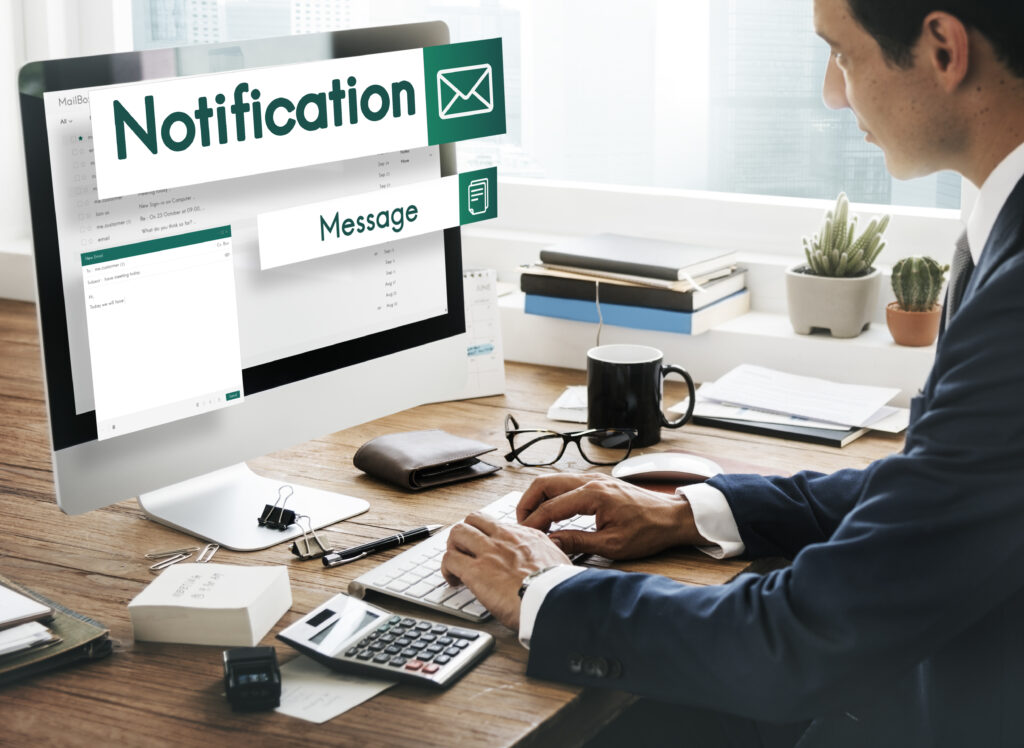"Email Marketing Trends with 3 Vital Insights and Game-Changing Tips"
Introduction to Quảng bá qua Email in 2023
Email Marketing remains a tried-and-true method that is continually developing as the Digital Marketing landscape evolves. In the fast-paced world of 2023, marketers must be more informed than ever before, armed with data-driven insights and market trends to power their Email Marketing success. Prepare to embark on a journey with us as we delve into the state of Email Marketing, supported by significant research, trustworthy sources, and market analysis. We'll provide you with a full insight into the ever-changing Email Marketing scene in 2023, from unlocking crucial facts to disclosing best practices. So come along for the ride as we discover the keys of leveraging the power of Email Marketing in the new digital world.
Market Analysis and Email Marketing Statistics
To really comprehend the situation of Email Marketing, it is necessary to review the most recent statistics and market analysis. According to a recent Statista estimate, the global email user population is predicted to exceed 4.6 billion by 2023, giving a tremendous opportunity for marketers to reach a large audience. Furthermore, according to Campaign Monitor research, the average open rate for marketing emails across all industries is roughly 24%, with a click-through rate of 4.3%. These figures demonstrate the enduring importance of email marketing as a viable communication medium with potential clients.
According to market research firms Forrester Research and eMarketer, the Email Marketing business is predicted to reach $22.16 billion by 2025, demonstrating continued growth and investment in this channel. Additionally, industry trends like enhanced personalization, automation, and mobile optimization are driving the growth of email marketing techniques. Marketers must change their techniques to fit with these trends and stay ahead of the competition as customers want more relevant and interesting information.
Best Practices for Email Marketing Success
Here are some best practices for optimizing your Email Marketing efforts in 2023, based on the most recent research and industry insights:
1. Segmentation
The days of one-size-fits-all email campaigns are over. Marketers can design highly targeted and personalized email messages based on user behavior, demographics, preferences, and more, thanks to the availability of data and advanced segmentation technologies. As a result, open rates, click-through rates, and overall engagement increase.
According to a Mailchimp analysis, segmented email campaigns had a 14.31% higher open rate and a 100.95% higher click-through rate than non-segmented campaigns. Effectively utilizing segmentation can assist you in tailoring your content, offers, and calls-to-action to resonate with different segments of your audience, resulting in improved campaign effectiveness.
Credit Source: Mailchimp's "The Benefits of List Segmentation in Email Marketing"
(https://mailchimp.com/resources/research/the-benefits-of-list-segmentation-in-email-marketing/)
2. Automation
Automation is an important trend in Email Marketing because it enables marketers to send customized messages at scale depending on predetermined triggers and actions. This can include automatic welcome emails, abandoned cart reminders, post-purchase follow-ups, and other types of communications. Automation not only saves time and effort, but it also ensures that subscribers receive timely and relevant communication.
According to Campaign Monitor, automated emails have a 70.5% higher open rate and a 152% higher click-through rate than standard emails. You can provide timely and targeted communications that promote engagement and conversions by incorporating automation into your Email Marketing strategy.
Credit Source: Campaign Monitor's "The Ultimate Email Marketing Benchmarks for 2021" (https://www.campaignmonitor.com/resources/guides/email-marketing-benchmarks/)
3. Mobile Optimization
With the increased use of smartphones and mobile devices, it is critical to optimize email campaigns for mobile. According to Litmus, mobile devices account for 46% of all email opens, thus making your communications mobile-friendly is critical.
Credit Source: Litmus' "Email Client Market Share Trends for 2021" (https://litmus.com/blog/email-client-market-share-trends-for-2021)
You risk losing potential engagement and conversions if your email campaigns are not optimized for mobile devices. When your emails are not mobile-friendly, they are difficult to read and navigate on smaller devices, causing your subscribers to have a terrible experience. According to surveys, 80% of receivers will discard an email if it does not appear properly on their mobile device.
Several critical criteria should be considered to guarantee that your email campaigns are mobile-friendly. First and foremost, evaluate the email design. Mobile-optimized emails are often shorter in length, with a clear and simple message that is easy to read on smaller screens. Images and graphics should also be avoided because they can slow download times and may not appear correctly on some devices.
The layout and formatting of the email are also key considerations. Emails designed for mobile devices should have a single column style, large fonts, and clickable buttons that are easy to tap on smaller screens. A responsive email design can also help to ensure that your emails appear excellent on any device, automatically changing to fit the screen size.
By tailoring your Email Marketing for mobile devices, you may drastically enhance engagement rates and conversion rates. According to studies, mobile-optimized emails have a 24.88% greater click-to-open rate than non-optimized emails. Furthermore, according to a Campaign Monitor study, mobile-responsive emails had a 15% greater click-through rate than non-responsive emails.

4. Personalization
In Email Marketing, personalization is no more a nice-to-have, but a must-have. Consumers today want relevant, targeted, and personalized emails based on their interests and choices. Marketers may generate dynamic content, personalized product recommendations, and targeted offers that appeal to individual subscribers by leveraging data and technology.
According to a study conducted by Accenture, 91% of consumers are more willing to shop with firms that provide relevant offers and recommendations. Personalization not only boosts engagement but also promotes customer loyalty and conversions.
Credit Source: Accenture's "Personalization Pulse Check" (https://www.accenture.com/us-en/insights/interactive/personalization-pulse-check)
Testing and optimization are essential for increasing the effectiveness of your Email Marketing. A/B testing is one of the top Email Marketing tactics used by marketers to boost email engagement rates, according to a HubSpot report. You may experiment with different email elements such as subject lines, preheader text, sender name, email copy, and CTAs by running A/B tests to see what resonates most with your audience.
To keep your email messages new and interesting, you must test and tweak them on a regular basis. Indeed, according to a Litmus study, emails with tailored subject lines have 50% greater open rates than those without personalization. According to Mailchimp, emails containing segmented content had a 14.31% greater open rate than non-segmented campaigns.
You may improve the performance of your emails by studying the results of A/B tests and making data-driven adjustments. For example, you may optimize open rates by employing customized subject lines, click-through rates by tweaking your CTA positioning, and conversions by testing multiple landing pages.
Overall, it is critical to test and update your email campaigns on a regular basis to ensure you are delivering the most effective and interesting material to your subscribers. You can increase the ROI of your Email Marketing efforts and produce better outcomes for your organization by testing and optimizing.
Credit Source: Optimizely's "A/B Testing Guide" (https://www.optimizely.com/optimization-glossary/ab-testing/)
Building an Effective Email Marketing Campaign

Aside from technical knowledge, here are other considerations for a successful Email Marketing campaign:
1. Planning Your Email Marketing Campaign
An effective Email Marketing campaign involves more than just sending out regular newsletters. It necessitates meticulous planning and strategy that takes into account the demands and interests of your subscribers. Here are some ideas to help you develop a successful email campaign:
Xác định rõ đối tượng mục tiêu của bạn: Determine your audience's demographics, interests, and behaviors. This information will assist you in crafting a personalized message that will resonate with your subscribers.
Establish Specific Objectives: Set explicit advertising objectives, such as raising sales, increasing brand awareness, or driving website traffic. This will allow you to assess the success of your campaign and make data-driven decisions.
Choose the Right Type of Content: Whether it's a newsletter, a promotional offer, or unique content, choose the right type of message for your audience. Check that it corresponds to the interests and preferences of your target audience.
Establish Email Frequency and Segmentation: Sending too many emails can lead to subscriber weariness, while sending irrelevant content can lead to unsubscribes or spam marks. You can enhance engagement and reduce the chance of unsubscribes and spam complaints by segmenting your email list and sending tailored communications.
Avoid Common Errors: Avoid sending spam emails or using misleading subject lines. Furthermore, check and analyze your Email Marketing analytics on a regular basis to uncover areas for improvement and optimize your campaigns for better results.
2. Avoiding Common Mistakes in Email Marketing
Sending too many emails too regularly is one of the most common mistakes businesses make, which can lead to subscriber fatigue, lower engagement, and higher opt-outs.
Setting an acceptable email frequency for your audience and paying attention to the timing and appropriateness of your messages will help you prevent these negative repercussions.
Avoid spamming practices like acquiring email lists or using false subject lines, which can harm your brand's reputation, reduce deliverability, and result in legal implications.
Concentrate on naturally growing your email list and only sending emails to those who have given you permission to do so. Use subject lines that are clear and honest, and that accurately reflect the substance of your communications.
Personalization is essential for connecting with your audience and increasing engagement rates. To provide a more meaningful experience for your subscribers, use personalization strategies such as include the recipient's name or adapting the material to their interests.
Another typical error is to overlook the design and layout of your emails. To avoid decreased engagement rates, make sure your emails are visually appealing, easy to read, and mobile-friendly.
3. Identifying and Fixing Issues in Your Email Campaigns
Open rates, click-through rates, bounce rates, and conversion rates can all be tracked using Email Marketing analytics.
Email Marketing data analysis can assist you in identifying areas for improvement, such as subject lines, content, and CTAs.
Improve your open rates by re-evaluating and improving your subject lines to make them more attention-grabbing and relevant to your audience.
Investigating increases in unsubscribes or decreases in engagement might help you find issues with your segmentation approach, content relevancy, or email design.
To better engage your subscribers, you may need to refine your segmentation approach or optimize your email design after identifying difficulties through analysis.
Even after designing a well-planned campaign, avoiding common pitfalls, and detecting and addressing difficulties, successful Email Marketing demands continual effort and attention.
Email campaigns may be continually tested and optimized to ensure they resonate with your target and meet your objectives.
Regularly monitoring email campaigns and making adjustments as needed can aid in the development of a successful Email Marketing strategy that increases engagement and sales.
Lời kết
To summarize, Email Marketing will continue to be a valuable tool for organizations in 2023, with tremendous growth potential and changing industry trends. Marketers may optimize their email campaigns for success by using data-driven insights, market analysis, and best practices such as segmentation, automation, mobile optimization, personalization, and testing. Staying up to date on the current trends, as well as harnessing technology and data, may assist you in creating relevant, engaging, and personalized email experiences for your subscribers, eventually delivering better outcomes and meeting your marketing objectives.
Remember to cite and reference trustworthy sources for your study to ensure the information's accuracy and credibility. Maintaining current industry knowledge and best practices will enable you to make informed judgments and stay ahead of the competition in the ever-changing landscape of Email Marketing in 2023.


